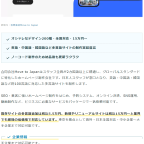
Common problems and solutions for handling inquiries in English.
I want to respond in English, but I don't know how to do it due to cultural differences. Do you have such concerns?
This article summarizes problems that tend to occur when responding to inquiries in English and solutions to those problems. In addition to specific solutions, the article also includes a collection of immediately usable English phrases, so the content is practical and can be used from tomorrow.
Common misconceptions when responding to inquiries in English
Customer service in English is an essential skill in global business. However, cultural and language differences, miscommunication, and various other miscommunications can occur. Here, we will discuss examples of common misconceptions in three categories.
Misunderstandings due to cultural differences
Cultural differences can be a major barrier to communication. Particular attention should be paid to the differences in business customs and values between Japan and other countries.
Examples of problems caused by lack of understanding of the other country's culture
For example, direct expressions are preferred in Europe and the United States, while indirect expressions tend to be preferred in Japan. There are many situations in which polite customer service in Japan may feel uncomfortable from the perspective of foreign customers because they do not understand the main point. Therefore, it is very important to try to communicate "NO or YES" in a way that is easy to understand.
Keep your response centered on words of gratitude.
When responding to inquiries in English, using "Thank you" is more positive than repeatedly saying "I am sorry" (Sorry). For example, even in times of trouble, be aware of phrases that express gratitude, such as "Thank you for bringing this to our attention" or "Thank you for your patience. This will increase customer satisfaction. This improves customer satisfaction and builds trust. An attitude based on gratitude rather than apology is especially effective in inbound communications.
Examples of problems due to language barriers
If English is not your first language, problems due to language barriers are inevitable. It is important to be careful not only to use accurate expressions, but also to avoid misunderstandings.
Misuse of jargon and slang
Misuse of jargon and slang in business situations can mislead others and give the impression of unprofessionalism. It is especially important to use accurate terminology when dealing with technical content. In addition, slang is an expression used in casual situations and should be avoided in business situations.
Grammar and spelling errors
Grammar and spelling errors can make others distrust you and undermine the credibility of your message. Special care should be taken in written communication, such as email and chat.Use grammar checking tools and other tools to create error-free sentences.Grammarlytools can help support English writing.
Misunderstanding due to overly polite expressions
Overly polite expressions may make the other party feel distant. It is important to be friendly yet professional. It is important to use different polite expressions depending on the situation.
Solutions to problems caused by language barriers
Problems caused by language barriers can be solved by using translation tools, dictionaries, and native checking. It is also important to use polite expressions according to the situation. Excessive politeness may instead confuse the other party.
Utilize translation tools and dictionaries
DeepL and Google Translate.Translation tools help you translate quickly.However, machine translation is not perfect, so you should always check and correct the content yourself. Also, technical terms and slang should be checked using an appropriate dictionary.
Get a native check
When sending important or complex emails, we recommend that you have them checked by a native speaker.Native checking ensures natural expressions and appropriate nuances.GengoIt is also a good idea to use a professional translation service such as
Polite expressions are used in different situations.
Polite expressions are important, but excessive politeness may confuse others.It is important to use appropriate expressions depending on the situation.
A collection of ready-to-use English phrases
English phrases that can be used in responding to inquiries are introduced here by category.
a fine thing to say (used as part of a sarcastic response to a rude remark)
| situation | phrase | Japanese translation |
|---|---|---|
| Writing out an email | Dear [Name],. | Dear [name |
| Write out the email (if the recipient's name is unknown) | To Whom It May Concern,. | Dear person in charge |
| Greetings by phone | Hello, this is [Your Name] from [Your Company]. | Hello, this is [your name] from [your company]. |
| Greetings in chat | Hi [Name], thanks for contacting [Your Company]. | Hello [name], thank you for contacting [your company]. |
apology
| situation | phrase | Japanese translation |
|---|---|---|
| General Apology | We sincerely apologize for any inconvenience this may cause. | We apologize for any inconvenience caused. |
| Apology for delay | We apologize for the delay in our response. | Sorry for the delay in replying. |
| Apologies for the mistake | We apologize for the mistake. We will take steps to prevent this from happening again. | We apologize for the mistake. We will work to prevent a recurrence. |
gratitude
| situation | phrase | Japanese translation |
|---|---|---|
| Thank you for your inquiry | Thank you for contacting us. | Thank you for your inquiry. |
| Appreciation for Cooperation | Thank you for your cooperation. | Thank you for your cooperation. |
| Appreciation for Understanding | Thank you for your understanding. | Thank you for your understanding. |
question
| situation | phrase | Japanese translation |
|---|---|---|
| Ask for more information | Could you please provide more details about [topic]? | Can you give us more details about [topic]? |
| Seek Confirmation | Could you please confirm [information]? | Could you please check [information]? |
| Ask about the problem | Could you please explain the issue you are experiencing? | Can you explain what kind of problem you are experiencing? |
confirmation
| situation | phrase | Japanese translation |
|---|---|---|
| Confirm understanding | Let me confirm if I understand correctly. Is that right? | Let me check if my understanding is correct. Do you mean [summary]? |
| Reconfirm information | Just to confirm, your order number is [number], correct? | Just to confirm, is [number] the order number correct? |
request
| situation | phrase | Japanese translation |
|---|---|---|
| Request information materials to be sent to you | Could you please send us the relevant documents? | Could you please send us the relevant documents? |
| Request Action | Would you please [action]? | Can I ask for [action]? |
notice
| situation | phrase | Japanese translation |
|---|---|---|
| turn down a request | I'm afraid we are unable to [action] at this time. | Sorry, we are unable to [act] at this time. |
| Presenting alternatives | While we cannot [action], we can offer [alternative]. | We cannot [act], but we can offer [alternatives]. |
These phrases areALCand ... andEijiro on the WEBWe also refer to dictionary sites such as Selecting the appropriate expression for the situation,Courteous and accurate communicationKeep in mind that the
summary
When responding to inquiries in English, it is easy to encounter a variety of problems due to cultural differences, language barriers, and lack of communication. However, these problems can be resolved through advance measures and appropriate responses. By deepening cross-cultural understanding, using simple and clear expressions, and making use of translation tools, etc., misunderstandings caused by language barriers can be reduced. It is also important to establish good communication with customers through prompt replies and careful listening. By practicing these solutions and utilizing the phrasebook introduced above, you can improve customer satisfaction.
Our company, Move to Japan, is a specialist in inbound countermeasures, supporting more than 100 multilingual websites per year. We can introduce multilingual chat to streamline communication, consult on inbound business, and make your website multilingual at the lowest price from 29,000 yen. Click here for more information 👉 https://movetojapan.support








